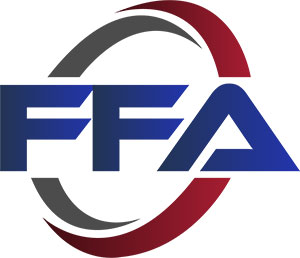This research aimed to evaluate the efficacy of supporting-expressive category (SEG) therapy and body-mind-soul (BMS) intervention toward mental inhibition and mental worry during the Chinese cancer of the breast people. SEG focused on emotional expression and you may class service, whereas BMS emphasized recreation and care about-proper care. All groups acquired dos-h per week coaching to have 8 weeks. The participants accomplished proportions toward psychological suppression, imagined worry, stress, and you may depression during the standard and you may three realize-up examination for the 1 year.Having fun with hidden development modeling, overall group differences was discover having psychological inhibition (? (2)(2) = 8.88, p = 0.012), marginally for understood worry (? (2)(2) = 5.70, p = 0.058), however having nervousness and you can anxiety (? (2)(2) = 0.19-0.94, p > 0.05). Post-hoc analyses shown a critical and you will reasonable avoidance (Cohen d = 0.55, p = 0.007) when you look at the mental suppression from inside the SEG as compared to control class, whereas BMS contributed to a somewhat high and you can average fall (d = 0.46, p = 0.024) when you look at the perceived stress. Neither SEG nor BMS rather improved anxiety and anxiety (d 0.05).The present overall performance failed to demonstrate total abilities getting often BMS otherwise SEG treatment in the modern test off Chinese non-metastatic cancer of the breast customers. The participants appear to derive only more compact advantages when it comes to its emotional really-becoming of possibly intervention. Consider facts getting DOI /s00520-016-3350-8 Have a look at facts to own Online out-of Research ID 000387224900013 See info for PubMedID 27470259 See information to have PubMedCentralID PMC5082591
Conceptual
Getting virtual environment for the disease assistance may offer a certain prospective to activate patients while increasing adherence to treatment. Development and you will airplane pilot-evaluation an on-line real-go out multiple-affiliate about three-dimensional platform, this research examined the usage an early on model of system one of teenage and you may more youthful mature cancer clients. Analysis was amassed with an on-line questionnaire and using ethnographic strategies regarding participant observance. This new adolescent and you will more youthful mature patients looked at first top features of brand new virtual ecosystem and many held brief inside the-community connections with fellow patients throughout the hospitalization. They’d zero reservations about utilizing the technical and mutual its information on its have fun with. Our very own airplane pilot shot pointed to loads of areas of innovation for digital ecosystem software since possible networks to have medical otherwise behavioral interventions inside cancer care and attention. Complete, the outcome have demostrated the necessity for highest member wedding throughout the growth of such interventions and you can early testing from intervention designs. Look at details to possess PubMedID 27895100
Abstract
Exposure things to have chemotherapy-triggered vomiting and nausea (CINV) are elderly years, women sex, alcohol consumption, and a reputation motion diseases. Though gastrointestinal episodes are located to-be related to sleep and you will temper various other requirements, absolutely nothing is well known regarding their consequences to your CINV.Which potential observational studies employed clients with very early-phase breast cancer who’d recovered out of surgery before receiving an effective earliest cycle off anthracycline and cyclophosphamide-mainly based chemotherapy. Candidate items of CINV was basically assessed before chemo that with the following: this new Pittsburgh Sleep High quality Index, this new Insomnia Severity Index, the brand new Epworth Drowsiness Scale, together with Medical Stress and you may Depression Level. Chemotherapy-created nausea (CIN) and you may chemotherapy-triggered illness (CIV) have been discussed considering a numeric score level (0-10) the following: ?3, nausea; ?step one, illness.Between , investigation had been amassed out of 198 customers. Chemotherapy-induced vomiting occurred in 35.4% away from customers, and you can CIV occurred in 30.3%. Chemotherapy-induced nausea is rather of the poor bed high quality (odds ratio [OR], 2.48; 95% confidence period [CI], step one.13-5.46; p = 0.024) and you will pretreatment nausea (Otherwise, 4.81; 95% CI, 1.84-; p = 0.001). Additionally, CIV try notably of terrible bed top quality (Otherwise, 2.64; 95% CI, step one.21-5.78; p = 0.015) and pretreatment disease (Otherwise, 3.07; 95% CI, step 1.23-7.66; p = 0.016).Poor sleep high quality develops likelihood of CINV inside the customers which have breast malignant tumors. Sleep disorders is going to be analyzed and considered throughout the management of CINV. View facts having PubMedID 27428859


